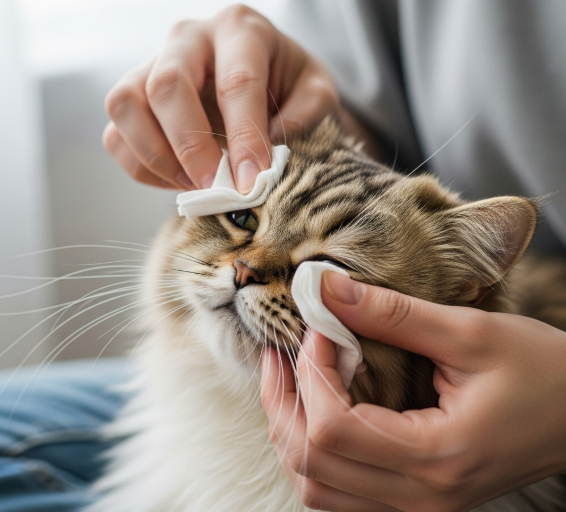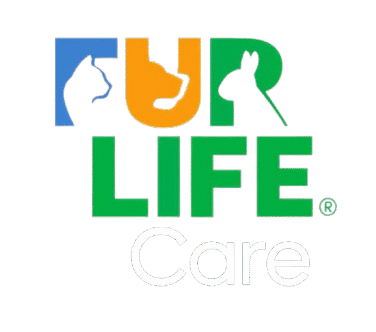How to recognize and treat eye discharge in cats.

If your cat’s usually bright and sparkling eyes suddenly look goopy or crusty, it can be alarming. How did this happen so fast? What’s causing those eye boogers, and how do you help your feline friend feel better? The good news is there are plenty of ways to relieve your cat’s discomfort and restore those enchanting eyes. But first, it’s important to understand what might be wrong.
What Are Cat Eye Boogers?
Eye boogers are any kind of discharge coming from your cat’s eyes. This can include tears, crusty buildup at the eye corners, mucus that’s green or yellow, pus, or even blood. Normally, a thin tear film covers the eye surface to protect it, and blinking helps wipe away dust and debris—much like windshield wipers on a car.
When your cat’s eyes face irritation or infection, they produce extra tears and mucus as a defense mechanism. Depending on the cause, the type and amount of discharge can vary. While some discharge is protective, other types indicate a problem that needs veterinary attention. Since eyes are delicate, ignoring sudden or increased discharge can lead to serious complications or even permanent damage.
Common Causes of Eye Discharge in Cats
Eye discharge can happen for many reasons, and it’s often impossible to pinpoint the cause just by looking at the discharge. Your veterinarian will use exams and tests to identify the root issue. Here are some of the most frequent causes:
1. Eye Infections
The most common culprit is an eye infection causing conjunctivitis. This is especially seen in kittens and cats with weakened immune systems. The feline herpesvirus (FHV-1) is the top offender, but calicivirus and bacteria can also cause infections. Infected eyes are usually painful, red, swollen, and watery with mucus or pus-like discharge—often affecting both eyes.
2. Allergies
Cats can develop allergies that cause watery eyes, mucus discharge, and sometimes conjunctivitis. Allergy symptoms may be seasonal if triggered by pollen or plants, or year-round if caused by dust or indoor irritants. Both eyes are generally affected, and you might notice itching, swelling, or hair loss around the eyes.
3. Foreign Objects
Anything stuck in your cat’s eye—like dust, plant material, or even a nail—can cause pain and excessive tearing. Cats usually keep the affected eye shut and may rub or paw at it frequently. Usually, only one eye is affected by foreign bodies.
4. Anatomical Issues
Some cats are born with eyelid problems like entropion, where the eyelids roll inward causing eyelashes to irritate the eye surface. Others may have incomplete eyelids that prevent normal blinking. These chronic issues often require surgical correction.
5. Breed-Related Problems
Certain breeds with flat faces (like Persians and Scottish Folds) often have blocked tear ducts or bulging eyes, leading to tear overflow, staining, or eye injuries. These conditions increase the risk of irritation and infections, causing discharge.
When Is Eye Discharge Normal vs. Abnormal?
A small amount of crust or discharge at the eye corners is normal, as the eyes clean themselves regularly. But if you notice constant, excessive discharge, especially if it’s thick, green, yellow, pus-like, or bloody, this signals a medical problem.
Look for other signs like redness, swelling, squinting, or if your cat keeps their eyes closed. These symptoms always require veterinary evaluation.
When Should You See a Vet?
Any eye issue warrants prompt veterinary care. Eyes are fragile and important—minor problems can escalate quickly. Untreated eye conditions may lead to permanent vision loss or serious complications. Many eye problems also cause pain, so timely treatment is critical to relieve your cat’s discomfort and protect their eyesight.
Home Care and Support
While eye infections and other issues need veterinary treatment, you can support your cat’s healing at home:
- Gently Clean the Eyes: Use a damp cloth or paper towel to carefully wipe away discharge. Don’t force your cat’s eyes open if they’re squinting.
- Use Eye Wash (With Vet Approval): Artificial tears can help rinse out debris, but check with your vet first to ensure it won’t interfere with medications. Never touch the eye surface with the applicator tip.
- Protect Their Eyes: If your cat rubs their eyes due to irritation, use an Elizabethan collar (cone) to prevent further injury, especially when unsupervised.
- Comfort Your Cat: Eye conditions can be painful and stressful. Use treats, gentle play, cuddles, and calming products like pheromone diffusers to reduce anxiety.
Preventing Eye Problems in Cats
While not all eye issues are preventable, some steps can promote eye health:
- Keep Faces Clean: Regular grooming, especially for long-haired cats, prevents fur mats that can irritate eyes.
- Routine Vet Visits: Annual check-ups and vaccinations help catch problems early and protect against common eye infections like herpesvirus and calicivirus.
- Stay Alert: If you notice anything unusual with your cat’s eyes, seek veterinary advice immediately to avoid complications.
Conclusion
Your cat’s eyes are a window into their health and emotions, so spotting eye discharge can be worrying. Causes range from infections and allergies to foreign objects or inherited problems. The best way to protect your cat’s vision and comfort is to get a vet diagnosis and start treatment promptly.
With early care, most eye issues can be successfully treated, helping your cat get back to their bright-eyed, curious self. Before long, those gorgeous feline eyes will be sparkling again.
If you think your cat is sick, contact your veterinarian immediately. For personalized advice and treatment, your vet knows your cat’s health history and is the best resource for keeping your pet safe and healthy.
